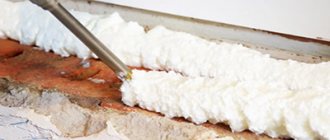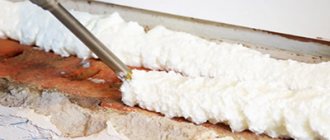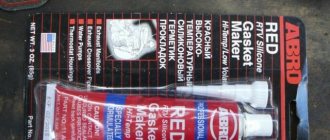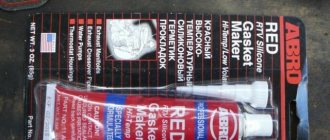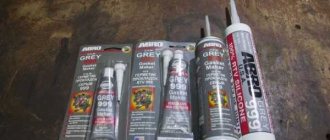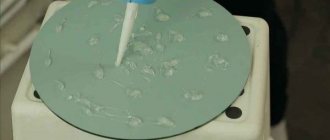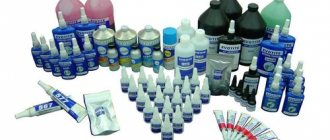Sealing agents have become a very strong part of our lives. And it is impossible to imagine any construction or renovation of a house or apartment without them. And there are a lot of these products on store shelves. Some are more expensive, others, on the contrary, are very cheap.
The most popular sealing agents are sealant and polyurethane foam. Those who have never encountered such materials before think that these two products are one and the same and mistakenly buy something completely wrong.
In our article today we will tell you what polyurethane foam is and how to use it correctly to achieve a good result.
Features of polyurethane foam
Polyurethane foam is sold in aerosol cans, which must be shaken before use. Immediately after application, the substance begins to harden, resulting in a yellowish-colored material. The material is lightweight and has good thermal insulation and sound insulation characteristics. Depending on the manufacturer's recommendations, foam can be used indoors and outdoors.
Conventional polyurethane foam has a number of positive characteristics:
- Resistance to moisture, providing thermal insulation and sound insulation properties.
- Possibility of using sealant when installing electrical equipment due to low current conductivity.
- Resistance to fire (special fire-fighting types of polyurethane foam).
- A significant increase in volume immediately after leaving the can, filling distant microcracks located in hard-to-reach places.
- Possibility of gluing various homogeneous and dissimilar materials.
- Environmental friendliness, absence of toxic substances in the composition, chemical inertness.
Before using polyurethane foam and applying it to surfaces, it is recommended to check its performance characteristics on the packaging. Typically, the packaging indicates the volume of the substance after leaving the cylinder, the viscosity level and other characteristics.
Release form
Manufacturers produce polyurethane foam in different forms and types. The choice will depend on the intended use and operating conditions of the sealant.
It is customary to distinguish:
- Professional polyurethane foam, which is produced in special large cylinders that must be inserted into a gun to spray the substance. Using a gun, economical consumption of sealant is ensured. Used by builders when carrying out large volumes of work.
- Household polyurethane foam, which comes with a tube (it is usually used to foam cracks, joints, and gaps). Designed for household use for minor repairs and gluing surfaces.
Also, the can of polyurethane foam must indicate the recommended temperature conditions for using the sealant. There are summer, winter and universal (all-season) polyurethane foam. When purchasing, it is recommended to pay attention to the flammability class of the material (B1 - fire-resistant materials, B2 - self-extinguishing materials, B3 - combustible materials).
Checking quality is worth your time and money!
Your foam should be flexible and adhere well to the surface. The fact that after shrinking and completely frozen, it will not crumble will also speak about its quality. Do not add additional work to yourself - you cannot touch or process the polyurethane foam before it has completely hardened, so as not to change the structure of the material itself and not to interfere with the polymerization process.
If the material meets existing standards, then you will be satisfied with the quality. This means that you won’t need to redo the work done. Just keep in mind that different manufacturers offer cans with different foam output volumes. Sometimes it is cheaper to buy an expensive can of aerosol that will cover all your joints than to buy two cheaper ones.
Scope of application of polyurethane foam
Conventional foam cylinders, which are sold in hardware stores, are used in the installation of door and window structures, as well as in the installation of electrical equipment and pipes.
The sealant has a sufficient level of thermal insulation characteristics so that it can be used to seal gaps and cracks in heating systems, defects in roof thresholds, and also provide partial insulation of ceiling, floor, wall structures and ceilings. It is also often used to attach wall panels and polymer boards to a rough surface, which provides a decorative and waterproofing function.
Polyurethane foam is used to treat the external surfaces of metal baths (made of steel or cast iron), which reduces the heat transfer of the metal.
Specifications
Technical characteristics of polyurethane foam:
- Extension. Indicates the volume that the mixture occupies at 2 stages: leaving the container and solidifying. The greater the expansion, the denser the gap (seam, hole) will be foamed. Average figures are 10-60% for household compositions, and 180-300% for professional compositions.
- Adhesion. Indicates the tenacity of the composition with the surface inside the foamed space. The higher the viscosity, the less the foam will slide off. This is relevant if you need to foam holes on a vertical surface (on the wall) or on the ceiling (from where the foam can drain before it hardens). In numbers, the normal parameter is considered to be 0.4-0.48 MPa.
- Volume in container and volume out. Common parameters: 300 ml (will give about 30 liters of hardened foam), 500 ml (will give about 40 liters of foam), 750 ml (will give up to 50 liters of foam) and 1000 ml (80-100 liters). The volume of frozen foam is given approximately under normal conditions (room temperature).
- Temperature at which foam can be applied.
These characteristics are indicated on the cylinder.
Purpose and scope
Polyurethane foam is used in construction at the following stages:
- Rough finish.
- Installation of door frames, balcony and window frames.
- Communication laying (for sealing between water pipes, sewer pipes, ventilation ducts, gas pipelines and the wall to prevent vibration).
Its purpose is to seal holes, cavities, seams and joints between structural elements if their width exceeds 2-3 cm. Previously, cement and tow were used for such tasks, but this method is longer and more complex.
Recommendations for use
If we talk about how to properly use polyurethane foam and how to work with it, then you need to clarify whether a gun is used or not. If you plan to carry out a full renovation of your home, you will have to use both professional and household foam to foam joints, seams, gaps, and install windows and doors.
You can install the gun on professional sealant as follows:
- First, the canister with the substance needs to be warmed up a little in warm water to 20-25 degrees. Then you need to shake it several times so that the substance becomes as homogeneous as possible and comes out of the can smoothly and easily.
- At the top of the gun, you need to remove the protective cover, then turn it with the handle down and screw on the can of sealant. You need to screw it in until a characteristic hissing sound appears, which will indicate the beginning of the substance entering the gun.
- If the gun is not new and has already been used, then it is necessary to inspect it before screwing in the can so that it is washed thoroughly. If after screwing in there is no hissing, then the gun is dirty and you need to buy a new one.
- Before starting to work with polyurethane foam, according to the rules, you need to shake the gun with the cylinder again, turn the adjusting screw ¼ turn and, holding the trigger, begin processing.
To work with a gun, there is no need to have any skills and abilities in the field of construction and installation work. Work is usually performed in the following sequence:
- The first step is to clean the surface where the sealant will be applied to remove dirt, and then moisten it with water from a spray bottle to ensure good adhesion.
2.Next, the gun nozzle must be directed at the surface to be treated, gently pull the trigger and apply the sealant in the required volume.
3.To fill a vertical gap, it is recommended to process it from the bottom up.
4.If the surface to be treated is wide, you need to fill it with zigzag movements, but no more than 1/3 of the volume, because the polyurethane foam will increase in size.
5.If there are any untreated areas left, they can be filled in later.
If it is necessary to perform treatment in remote areas, it is recommended to additionally purchase a special extension hose, since it is unlikely that it will be possible to foam hard-to-reach areas with foam without using it.
The can usually indicates how long it takes for the composition to harden. Despite the instructions, it is recommended to wait 10-12 hours. Once the sealant has completely cured, you can remove the excess using a knife or saw.
When using household sealant, there is no provision for a gun. It’s okay if the polyurethane foam comes without a gun, since you can use it with a straw. The tube is made of polymer materials - you just need to put it on the adapter. The work is performed in the same sequence as in the case of a gun, but when using a tube you will have to put in more effort.
You can easily use polyurethane foam without a gun if you have the appropriate tube. But in construction stores, the sealant can be sold without a tube (cheap models), so you will have to purchase it separately. You should also pay special attention to this when choosing suitable polyurethane foam.
The use of a tube is relevant if a small amount of work is expected to be performed. It is recommended to use polyurethane foam with a tube if you need to fill joints, gaps, seams, or glue different materials. Household sealant is rarely used when constructing door and window structures or when treating large surfaces. For thermal insulation and sound insulation, you should also choose professional analogues.
On video: Using polyurethane foam without a gun.
Subtleties of application
In order for the quality of work to be excellent, you need to study the intricacies of applying polyurethane foam.
Before the application process, the working conditions recommended by the material manufacturer should be created. Temperature 5–20 degrees. No work is carried out at temperatures above 30 degrees. For low temperatures, frost-resistant products are used.
During operation, the location and longitude of use are taken into account. This determines which cylinder to buy: household or professional. The household one has a special tube through which the mixture is supplied to hard-to-reach places and does not require the use of a gun. With such cylinders, quick repairs are carried out. Professional is designed for a pistol. It is served in precise portions and used over and over again.
Correctly foaming with polyurethane foam means taking into account the following: filling too quickly will lead to the formation of air pockets in which there is no density. If filling is very slow, excess consumption of mass occurs. Since the required amount falls into the cracks and necessary spaces, and some protrudes out.
Disadvantages of applying polyurethane foam without using a gun
Using a gun when applying sealant is a guarantee of uniform release of material from the container, the possibility of saving substances, and full control over surface treatment.
If ordinary household polyurethane foam is used in a package with a tube, then the workflow will have certain disadvantages. The most notable of them are:
- Significant consumption of sealant. Overflow occurs because the user must exercise control over the intensity and duration of pressing the valve. It is quite difficult to do this over a long period of time, so almost always when processing using a tube, an excess volume of polyurethane foam appears, which leads to significant overruns. Professional sealant using a gun is usually consumed 1.5-2 times slower. This leads to small but noticeable financial costs (especially if a large amount of work is expected to be carried out).
- If you purchased a professional sealant, then there is a high probability that it will not be possible to use a regular tube that is suitable for household polyurethane foam. The can simply will not release sealant. This point must be clarified when purchasing the material.
- Using polyurethane foam without a gun is much more difficult than with one. The tubes are made of a polymer material and are therefore flexible - making them harder to hold in position for longer than a gun.
At the same time, there is no point in purchasing professional polyurethane foam or a gun for applying it if you intend to carry out minor repair work: fill gaps, seal joints and cracks between slabs, in thermal insulation material. In this case, you need to buy a household sealant with a tube, use it once and throw it away.
Removal from surfaces
One of the significant advantages and at the same time disadvantages of polyurethane foam is its ability to connect to almost any surface. During installation, this feature helps to apply it in an even and durable layer even on a smooth PVC profile. But if the work is carried out carelessly and the material gets on furniture, floors, textiles and other surfaces, it firmly adheres to them and requires proper and quick removal. Let's take a closer look at how to do this from a particular surface:
- textile products. Fresh foam is cleaned from the surface with a cotton pad, after which the fabric is treated with a special thinner. There is a high risk of staining;
- varnished and laminated surfaces. In case of contact with furniture or laminate, remove with a damp cloth. After this, special thinners are used to remove the remaining stubborn foam. It is almost impossible to avoid stains on varnished surfaces.
Thus, upon contact with most surfaces and materials, their appearance may deteriorate, stains and other unpleasant marks may form. This can be avoided by being careful and following instructions on how to properly use polyurethane foam yourself. If you are not sure that the work will be carried out accurately, then it is better to take the necessary safety measures in advance: cover the floor with film, remove furniture, curtains, etc. from the work area, and cover nearby surfaces with masking tape. This will require additional time, but will prevent damage to property.
By contacting Sika, you can order professional foam, as well as related materials for work. We supply products at competitive prices that meet European quality standards. Our specialists will help you select products for any job.
Important Tips
To carry out home and household repair work, one can of polyurethane foam is enough. If all the work has been completed, the cylinder is usually thrown away as unnecessary, because after opening the substance has a limited shelf life.
Manufacturers of household polyurethane foam note that their products are designed for single use. Therefore, if, several months after the first use, the sealant in the cylinder has frozen, you need to understand that this is a completely natural process.
You can give the following advice to those people who are working with polyurethane foam for the first time:
- Before starting work, it is recommended to first prepare a spray bottle with water and a knife to remove excess sealant (this is done after the applied composition has hardened).
- It is also recommended to stock up on a regular sponge and acetone (or a similar solvent) in advance. They will be needed if you need to wipe off sealant that accidentally gets on other surfaces (for example, on the floor or on clothing).
- You should not try to remove excess polyurethane foam immediately after application - this should be done approximately 8-10 hours after treatment. During this period, the sealant will harden, so it can be easily cut with a sharp knife or hacksaw.
- If wallpapering has not been done in the room, then it is strongly recommended to carry out work on applying polyurethane foam (regardless of the volume of material sprayed), systematically ventilating the room.
- If during the application process the sealant begins to gradually darken, this will indicate that the substance is exposed to ultraviolet radiation (direct sunlight). This kind of thing should be excluded when carrying out work.
- It is strictly forbidden to treat surfaces with polyurethane foam if they are located in close proximity to open fire or hot objects. Regardless of the type, the sealant almost always contains flammable substances in its composition, which, in an uncured state, are quite capable of flaring up if suddenly exposed to an open flame.
- Before starting work, it is necessary to clean the surface to be treated as thoroughly as possible. If it is dirty and greasy, then the polyurethane foam will not meet the characteristics specified on the packaging during operation.
Is it possible to use a can of polyurethane foam several times?
You can find information on the Internet that professional polyurethane foam can be used repeatedly, while household models are only suitable for one-time use.
This is a common misconception, because if you use household foam, then after using it you can clean the nozzle, remove the tube and block the exit hole for the substance. To be able to use the sealant again, it is recommended to do everything in the following sequence:
- It is necessary to release a little of the polyurethane foam from the can, and, allowing it to come out, bend the tube and tighten it with metal wire. At the end of the tube, the sealant will begin to harden, but the presence of a bend will not allow the entire volume of the substance that remains in the cylinder to harden.
- When subsequently applying polyurethane foam, you simply need to cut off part of the tube with the frozen substance and continue to treat the gaps and seams with sealant.
It should be taken into account that a container with sealant can be stored in this way for 2-3 weeks and no more. After several months of storage, the substance will almost completely harden and harden inside the package, so it will not be possible to use it again.
Is it possible to use expired polyurethane foam?
Regardless of the type of sealant chosen, the shelf life of the substance usually does not exceed 1-1.5 years from the date of production. At the same time, if during its use a delay of several days or weeks was discovered, then you should not curtail the work - most likely, the polyurethane foam has not lost its basic operating and performance characteristics.
If the expiration date is significantly exceeded, it is strongly recommended not to use the sealant even for minor household repairs (especially for installing windows or doors). This is due to the fact that after the expiration date, the sealant begins to rapidly lose its basic properties, so when you open the package, anything can happen.
Terms of use of polyurethane foam after application
Leading sealant manufacturers claim that high-quality polyurethane foam, which has been applied to the surface in accordance with all the rules, is protected from ultraviolet exposure and moisture, and is capable of performing all its functions for 10-20 years.
If the applied substance is exposed to negative operating conditions: outdoors, in direct sunlight, rain, snow, etc., then the service life of the sealant is reduced to 2-3 years (even in cases where moisture-resistant compounds were applied).

